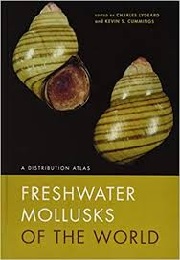Freshwater Mollusks of the World: A Distribution Atlas

Charles Lydeard and Kevin S Cummings (Eds)
Johns Hopkins University Press, £99.99
You might think that the spelling of ‘mollusks’ suggests a US focus to this book, but while it is true that the editors are based in Kentucky and Illinois, contributing authors are experts from around the world.
First impressions of this book are that it is well designed: the layout of the pages is good and the photographs, all in colour, are clear and an appropriate size. Even the pages have a nice feel. The editors have successfully ensured a consistency of approach throughout the 42 chapters.
The initial, and longest, chapter gives an introduction and overview that includes some of the history of zoogeography; points out that the phylum Mollusca (spelt with a ‘c’), with around 200,000 living species, is thought to be second only to arthropods in terms of number of species; and reminds the reader that freshwater molluscs are restricted to just two classes – bivalves (mussels and clams) and gastropods (snails).
To put this into context, these two classes have more species (over 5,000) than all the mammal species of the world, yet may be considered, arguably, as the most endangered fauna on the planet, partly due to lack of information about them. Some of the gastropods play a role as disease vectors, particularly for the liver fluke disease, schistosomiasis.
Following the introduction, subsequent chapters are short and concentrate on specific groups of freshwater mollusc, detailing their taxonomy and distribution, their key characteristics and any important studies relating to the group.
This book is likely to appeal to anyone working on freshwater molluscs or on the ecology of freshwater habitats, as it provides much-needed reference material not easily found elsewhere. It may also be of interest to shell collectors and those who enjoy natural history.
Dr Sue Howarth CBiol FRSB


